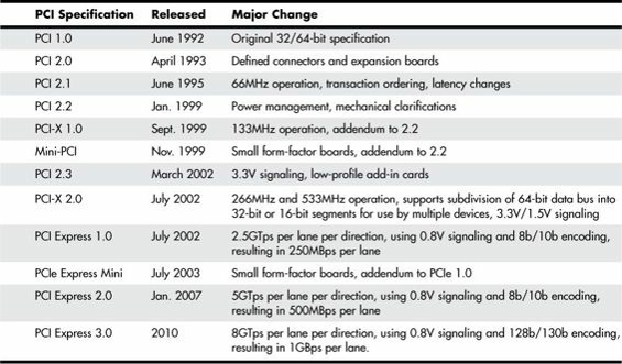Hardware Reference
In-Depth Information
Despite the low cost, after a new bus called PCI became popular, VL-Bus fell into disfavor quickly.
It never did catch on with Pentium systems, and there was little or no further development of the VL-
Bus in the PC industry.
To learn more about the VL-Bus, see “The VESA Local Bus” in Chapter 4, “Motherboards and
Buses,” in
Upgrading and Repairing PCs,
19
th
Edition, available in its entirety on the DVD
packaged with this topic.
The PCI Bus
In early 1992, Intel spearheaded the creation of another industry group. It was formed with the same
goals as the VESA group in relation to the PC bus. Recognizing the need to overcome weaknesses in
the ISA and EISA buses, the PCI Special Interest Group was formed.
The PCI bus specification was released in June 1992 as version 1.0 and since then has undergone
several upgrades.
Table 4.57
shows the various releases of PCI.
Table 4.57. PCI Specifications
PCI redesigned the traditional PC bus by inserting another bus between the CPU and the native I/O
bus by means of bridges. Rather than tap directly into the processor bus, with its delicate electrical
timing (as was done in the VL-Bus), a new set of controller chips was developed to extend the bus, as
shown in
Figure 4.42
.



